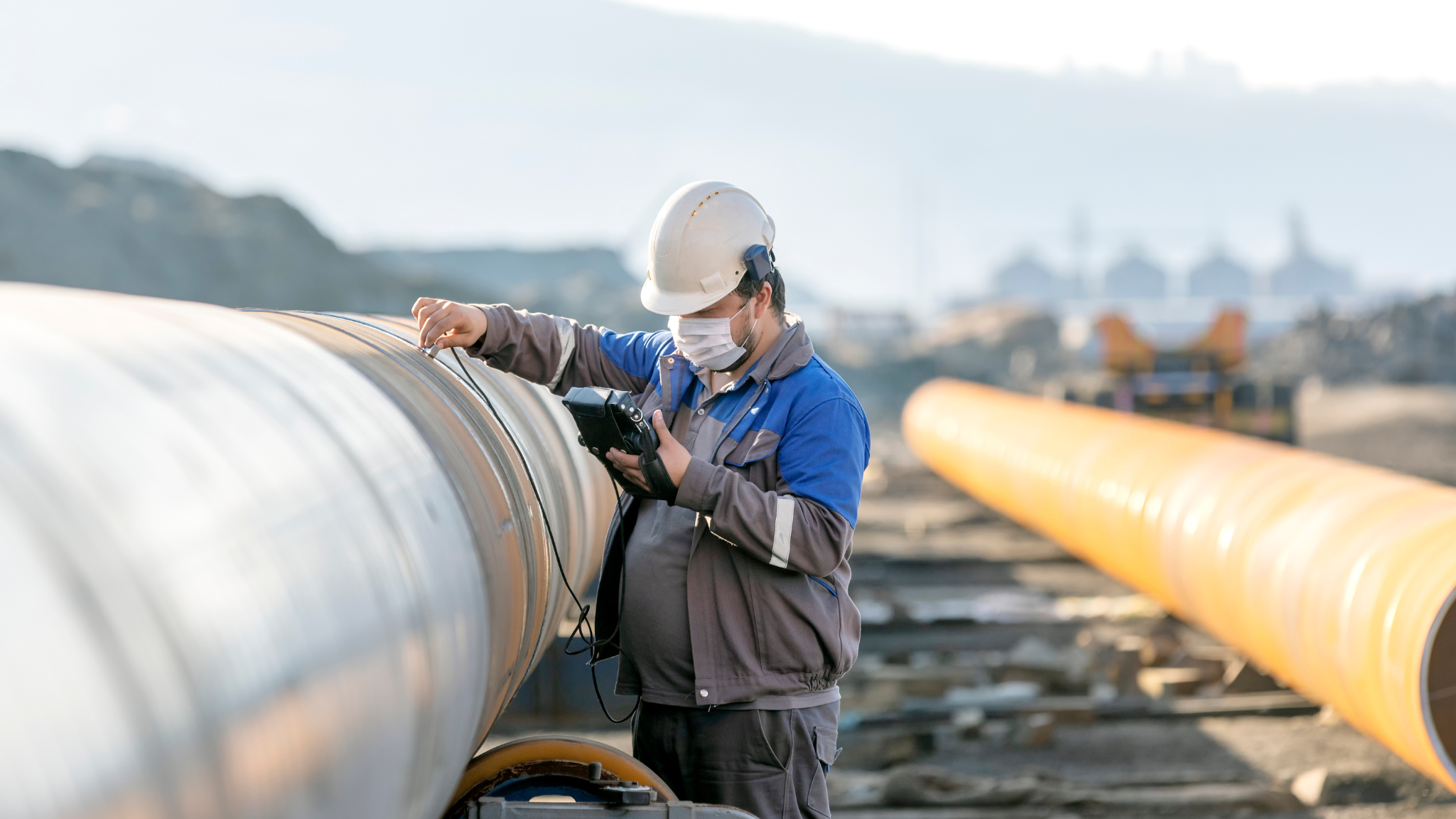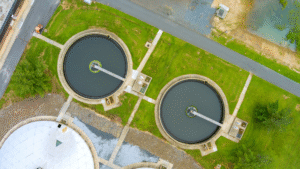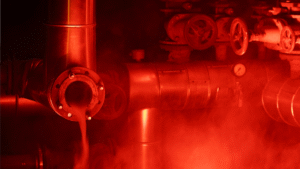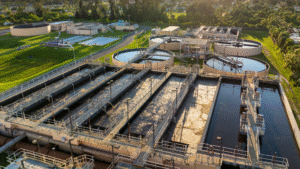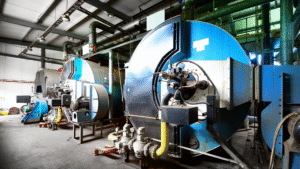Legionella risk has become a growing concern across industrial and commercial facilities, especially as building water systems become more complex. Legionella bacteria, the organism responsible for Legionnaires’ disease, thrives in warm, stagnant water and can cause serious health complications when inhaled through small droplets from showers, cooling towers, or air conditioning systems. According to the World Health Organization, outbreaks of this waterborne pathogen continue to rise globally, emphasizing the need for stronger disease control strategies.
For facilities that depend on extensive water systems—from manufacturing plants to healthcare facilities—preventing Legionella growth requires both engineering precision and chemical expertise. Traditional temperature-based methods alone may not eliminate bacteria hidden in biofilms or under low-flow conditions. Here is where smart chemical blending comes in.
By integrating chemistry-driven control measures into an effective water management program, operators can protect people, processes, and property. Understanding how these blends work, and why they are essential for industrial operations, is the first step in building a safer, more compliant system.
Understanding Legionella and Its Risks
Legionella is a naturally occurring bacteria found in freshwater environments, but when it infiltrates building water systems or industrial processes, it can multiply rapidly under the right conditions. The optimal growth temperature for Legionella bacteria is between 77°F and 113°F (25°C–45°C). Within this range, especially when nutrients are available, the organism can proliferate in hot water tanks, cooling towers, and other stagnant water sources.
Public health authorities, including the Centers for Disease Control and Disease Control and Prevention agencies, emphasize that legionella risk must be managed systematically. This includes controlling risk factors such as stagnant water, inadequate disinfection, and poor temperature control. In healthcare and long-term care facilities, managing Legionella infections is even more critical, since patients are more susceptible to serious complications.
Where Legionella Grows: Common Sources in Industrial Settings
Managing legionella risk begins with understanding where the bacteria thrive. Legionella multiply in warm, nutrient-rich, and stagnant water — conditions often found across industrial processes and building water systems.
High-Risk Areas in Industrial and Commercial Facilities
Common sites where Legionella growth occurs include:
- Cooling towers and centralized air cooling systems: Circulating water in these systems can generate small droplets that spread Legionella bacteria through the air, increasing the infection potential.
- Hot water tanks and potable water systems: When temperatures fluctuate or remain within the optimal growth range (25°C–45°C), the bacteria multiply rapidly.
- Showers, faucets, and shower heads: Stagnant water in outlets and long periods of disuse can foster biofilm buildup, a perfect home for Legionella.
- Hot tubs, fountains, and decorative water features: Aerated systems release droplets small enough to carry bacteria deep into the lungs, posing a health concern for those nearby.
Facilities at Higher Risk
Certain environments require extra vigilance:
- Healthcare facilities and long-term care facilities where residents often have weakened immune systems.
- Manufacturing and industrial buildings using recycled or process water loops.
- Cruise ships and hotels that manage large, complex water systems serving thousands of occupants.
Why Routine Cleaning Matters
Biofilms protect Legionella bacteria from disinfectants. Therefore:
- Regular cleaning water systems, flushing unused outlets, and descaling fixtures are vital control measures.
- Monitoring and maintenance reduce the chance of contamination before serious complications arise.
By pinpointing these risk zones, operators can apply precise, targeted interventions to reduce the risk of outbreaks.
The Science of Control: How Chemical Blends Mitigate Legionella Risk
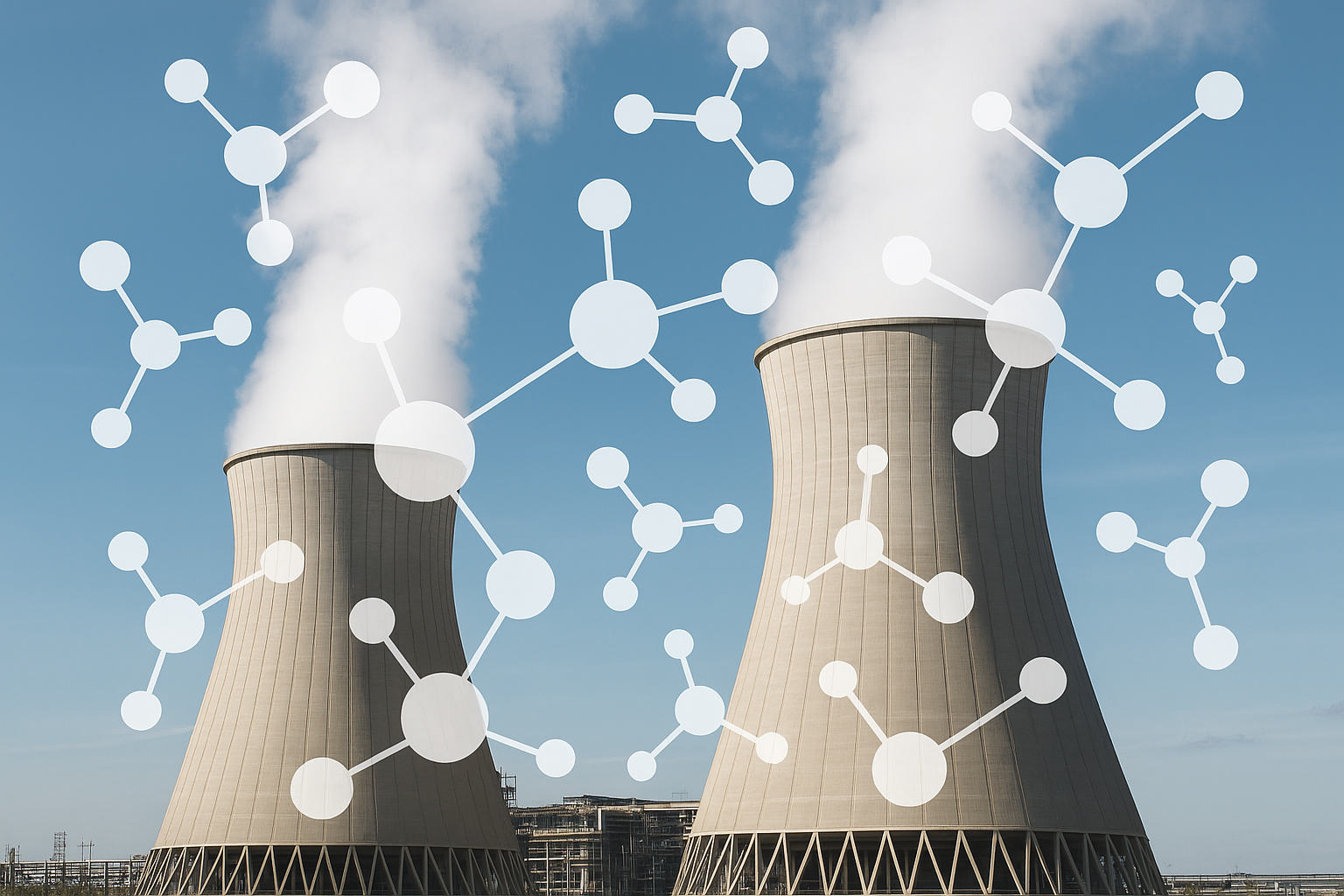
Effective control of legionella risk requires more than just temperature regulation. While maintaining proper heat levels is important, Legionella bacteria can persist in areas where temperature, flow, or disinfection are inconsistent. This is where smart chemical blending becomes a crucial layer of defense.
Why Chemistry Matters in Disease Control
An effective water management program integrates chemistry to target Legionella growth directly. Chemical treatments complement mechanical and thermal strategies by:
- Disrupting biofilms that shield bacteria and other waterborne pathogens.
- Maintaining disinfection residuals in building water systems and industrial processes.
- Preventing regrowth in low-flow zones or during equipment shutdowns.
- Reducing nutrient availability, limiting optimal growth conditions for the bacteria.
Organizations such as the Centers for Disease Control and Disease Control and Prevention highlight chemical disinfection as an essential control measure to prevent Legionnaires’ disease in high-risk settings.
Types of Chemical Treatments
Different chemical strategies are used depending on the system type and health department guidance:
- Oxidizing biocides
- Examples: chlorine, chlorine dioxide, bromine.
- Work by breaking down cell walls and oxidizing organic matter.
- Often used in cooling towers and potable water systems.
- Non-oxidizing biocides
- Examples: isothiazolinones and glutaraldehyde.
- Target the bacteria’s metabolic functions, providing long-lasting protection in closed loops.
- Corrosion and scale inhibitors
- Support disease control and prevention by maintaining stable water chemistry and preventing biofilm formation.
- Analytical validation
- Verification of treatment effectiveness through buffered charcoal yeast extract culture methods or advanced polymerase chain reaction (PCR) testing, both recognized by the cooling technology institute as part of the gold standard for legionella risk monitoring.
Smart Chemical Blending: Precision and Performance
Custom chemical formulations allow operators to:
- Adapt blends to specific water systems and industrial processes.
- Ensure consistency across large building water systems and cooling technology.
- Reduce operational costs while maintaining strong control and prevention outcomes.
Through tailored blends and continuous validation, facilities can achieve sustainable protection against Legionella infections and other microbial threats.
Also read: A Chemistry-First Strategy for Legionella Prevention
Building an Effective Water Management Program
Creating an effective water management program is the cornerstone of minimizing legionella risk in both industrial processes and building water systems. A well-designed plan not only meets regulatory expectations but also establishes a culture of prevention and accountability.
Core Elements of a Water Management Program
A successful program includes several essential steps recommended by industry standards such as ASHRAE 188 and guidance from the health department:
- Team Formation: Assemble a multidisciplinary team with expertise in water systems, chemistry, maintenance, and compliance.
- System Mapping: Develop detailed diagrams of water sources and flow paths to locate potential risk factors for legionella growth.
- Risk Assessment: Identify areas where the bacteria can multiply, such as hot water tanks, cooling towers, and other systems with intermittent flow.
- Control Measures: Apply proper treatment methods, including temperature management, disinfection, and cleaning water systems regularly.
- Monitoring and Recordkeeping: Track disinfection levels, temperature readings, and microbial test results to ensure consistent disease control.
Continuous Improvement and Prevention
Water management is not a one-time project; it is a living system of control and prevention. Facilities must:
- Review performance data regularly.
- Update control plans when changes in buildings or water systems occur.
- Integrate chemical optimization to reduce the risk of Legionella infections over the long term.
An effective water management program is the foundation for sustained safety and compliance, protecting both operations and public health.
ETI’s Approach: Chemistry-Driven Prevention and Training
ETI’s approach to legionella risk management combines advanced chemistry, proactive water management, and hands-on operator education to deliver complete system protection. The company’s philosophy centers on partnership—helping clients protect their building water systems while ensuring operational compliance and efficiency.
Comprehensive Legionella Control Solutions
ETI’s Legionella Treatment outlines a complete suite of Legionella control and prevention services designed for industrial, commercial, and healthcare facilities.
These programs integrate:
- Chemical disinfection technologies such as chlorine dioxide and non-oxidizing biocides to target Legionella bacteria effectively.
- Biofilm prevention solutions that remove protective layers and expose pathogens to treatment.
- Continuous monitoring systems that maintain control and prevention standards aligned with state health department and Centers for Disease Control guidance.
Together, these methods form a sustainable strategy that keeps water systems safe and compliant while helping operators minimize risk and prevent Legionnaires’ disease outbreaks.
Training and Professional Development
ETI extends its impact beyond products through its Bootcamp and training programs. These hands-on trainings empower operators, engineers, and distributors to manage waterborne pathogens confidently using the latest treatment practices and diagnostic tools.
By combining chemical expertise with practical education, ETI ensures its partners have both the knowledge and technology needed to protect healthcare facilities, industrial processes, and other systems from long-term Legionella infections.
Conclusion
Reducing legionella risk requires a smart, science-driven strategy that combines chemistry, monitoring, and operator expertise. ETI’s customized solutions and training programs help facilities protect their water systems while maintaining compliance and safety.
Contact ETI today to learn how our chemical blending solutions can safeguard your operations and prevent Legionnaires’ disease.
610-286-2010 | support@go2eti.com
Frequently Asked Questions (FAQ)
How does ETI help facilities reduce Legionella risk?
ETI provides customized chemical blending solutions and biofilm control treatments that target Legionella bacteria in building water systems. These solutions integrate with ongoing water management programs to maintain clean, compliant systems across industrial and commercial facilities.
What makes ETI’s Legionella treatment program different?
Unlike standard disinfectants, ETI’s programs use smart chemical blends tailored to the facility’s industrial processes and water chemistry. Each plan includes monitoring support, risk assessments, and chemical optimization to ensure control and prevention of Legionella growth over the long term.
How often should Legionella testing and maintenance occur?
Testing frequency depends on system design, water temperature, and risk factors. ETI helps clients create effective water management programs with scheduled inspections, flushing, and chemical analysis that meet state health department and CDC compliance requirements.
What types of facilities benefit most from ETI’s solutions?
ETI’s Legionella prevention programs are trusted by healthcare facilities, manufacturers, commercial buildings, and long-term care facilities. Each program is customized to reduce the risk of waterborne pathogens while keeping operations efficient and compliant.

